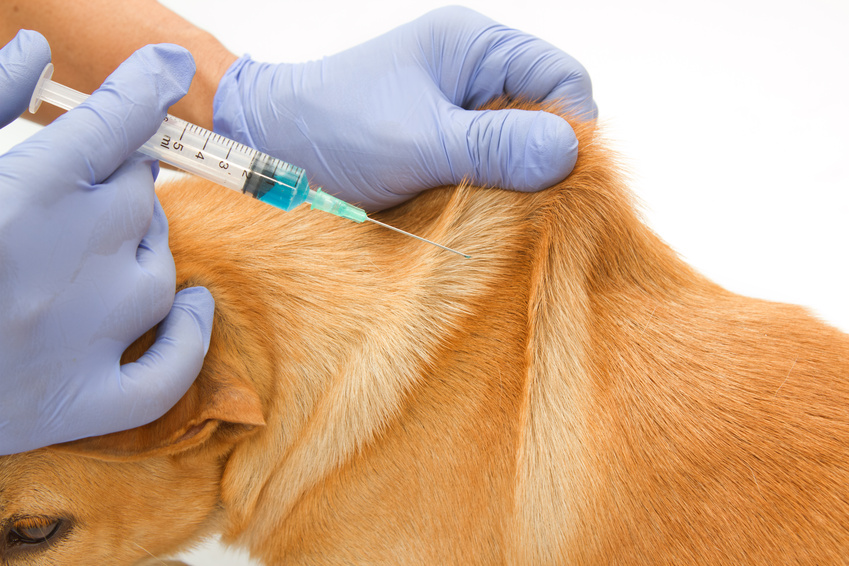Chemotherapy and Your Pet
At our hospital, we aim to provide your pet with the most up to date treatments and you the client, with all relevant information in order to help in the decisions to treat your pet. In line with this, we are now able to offer a complete approach to cancer care, treatment and diagnostics.
Just the mere mention of the word “chemotherapy”, conjures up pictures of suffering, nausea, vomiting and hair loss. Together with the emotional turbulence of a cancer diagnosis, the thought of chemotherapy is often negated in our pets.
However, these images are very often not the case when we administer chemotherapy to pets and almost all pets undergoing chemotherapy treatment go through their protocol with minimal to no side effects.
How is chemotherapy administered?
Most chemotherapy treatments are administered directly by an injection into the vein. This is performed by slowly injecting directly into the vein or through an intravenous drip usually given over 30-60 minutes. Some drugs are in capsule or tablet form and need to be given orally.
Most cases are treated on an outpatient basis. Patients are usually admitted in the morning and discharged later that same day.
What side effects does chemotherapy have in pets?
Unlike chemotherapy in humans, our pets experience very few side effects from chemotherapy drugs. The reason for this is mainly because the doses we use are different (in humans much higher doses are used as bone marrow transplant is readily available should the need arise), the metabolism of these drugs in pets is quite different and there are no psychogenic issues to deal with. In humans it is well documented that even though a drug is used that does not cause nausea and vomiting, they still experience these side effects. This has been researched and put down to a psychogenic cause – i.e. we think we should experience nausea therefore we do. Our pets do not know that they have cancer, and do not know that they are undergoing chemotherapy. The result is that we only have to deal with nausea and vomiting in those drugs that definitely are known to cause it (and there is only 1 or 2 that we use in veterinary chemotherapy). Prevention of nausea or vomiting in these cases is easily achieved through tablets dosed prior to and just after the chemotherapy.
Hair loss does not occur commonly in pets undergoing chemotherapy. This is because chemotherapy only affects hair that grows continually. Body hair in pets does not grow continually (only in certain breeds does this occur –and they may experience some degree of hair loss – e.g. Yorkshire terriers, Lhasa apso). Cats may lose their whiskers with some treatments though. Hair re-growth from shaved areas does tend to be sparse whilst on chemotherapy treatment.
Other side effects of chemotherapy in pets include bone marrow effects (we carefully monitor these functions during treatment however with the lower doses used in our pets side effects rarely occur) and diarrhoea (not common on most drugs, but if does occur is normally short lived and transient).
Is chemotherapy effective?
Depending on the type of cancer your pet may have, the answer to this question is yes. Many people speak about a “cure” for cancer, well; chemotherapy treatment can effect this in responsive cancers in about 10-15% of patients. Now, that may not seem very high, but it certainly is not 0%!
It is important that we have realistic goals when treating cancer, and thus you will often hear the term “remission” used more than “cure”. This is because chemotherapy is extremely effective at achieving remission in a large percentage of cancers, but may only cure a small percentage. The difference between humans and our pets, is that pets enjoy a full quality of life BOTH whilst on chemotherapy and during remission.
Is chemotherapy expensive?
Many of the drugs we use for chemotherapy are relatively expensive and the safety precautions that need to be taken in preparing and administering these drugs also add to their cost. However, in most cases, protocols can often be individualized to suit both affordability and logistics. One must also remember that whilst an expensive surgical procedure performed on your pet requires full settlement on discharge, a chemotherapy protocol generally runs over a period of time (often 4-6 months) and thus these costs are then spread out over that time. So, whilst chemotherapy treatment is not inexpensive, it can be tapered for individual cases. It is thus our recommendation that a consultation with a vet be held, after the diagnosis of cancer in your pet, where all the variables and possibilities can be discussed with you.
In summary, our thoughts on chemotherapy are often formed by our often negative experiences of cancer treatment in our human relatives or friends. This is indeed not the case when treating pets for cancer.
Our foremost goal is total quality of life, and we seek this in everything we do. There is a thought that says: “If we cannot extend life with quality, then it is not worth extending”.




